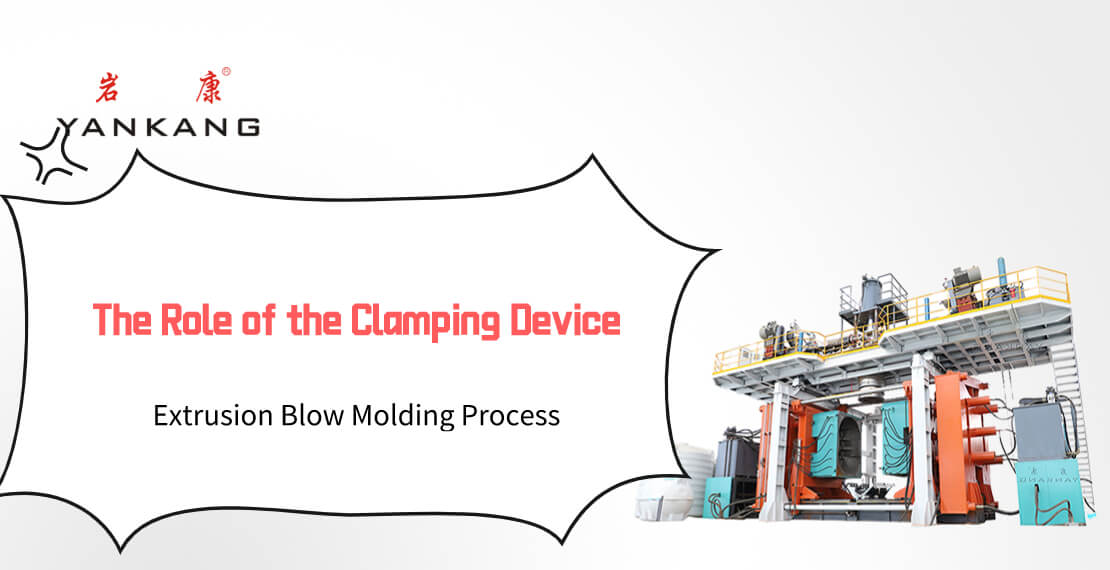Today, let’s talk about the role of the clamping device in the extrusion blow molding process.
Generally speaking, the extrusion blow molding process is through three-layer co-extrusion blow molding. The A extruder produces the middle layer, the B extruder produces the inner layer, and the C extruder produces the outer layer. The blank is extruded continuously during blow molding, and the blow molding model is completing the blow molding process of a semi-finished liner.
As we all know, the extrusion blow molding process is a process in which a parison is produced by extruding the extruder through the ring die of the head, and then the parison is moved into the blow mold to expand into a hollow product.
In actual production, for the molding of different types of products, especially when manufacturing large hollow products, if the direct extrusion blow molding technology is used, it often takes a long time to extrude the tube ring due to the limited extrusion capacity of the extruder. The billet often sags due to its own weight, and the upper part of the tube billet, near the die, the wall thickness is obviously reduced, and the wall thickness of the lower part is obviously increased. At the same time, the temperature of the upper and lower parts of the tube blank is relatively low due to the large difference in the residence time in the air.
In this extrusion blow molding process, the clamping device can play the following three functions:
The first is to fix the two mold halves and align them.
In the process of moving the movable mold to the fixed mold, the higher the synchronization, the more stable the operation will be, and there will be no swing. Not only can improve the yield and processing efficiency of the product, but also increase the service life of the equipment.
Play a guiding role.
When the movable mold and the fixed mold or the upper mold and the lower mold are closed, the guide parts are first introduced to guide the movable and fixed molds or the upper and lower molds to be accurately closed to avoid the core entering the cavity first, which may cause the core or the cavity Damage. In the ejection mechanism, the guide parts ensure the directional movement of the push rod, especially the slender rod, to avoid the pushrod from breaking, deforming, or being worn out during the ejection process.
The second is to make the mold open and close cyclically.
Play a role in positioning. Ensure the correctness of the moving and fixed molds or the clamping positions of the upper and lower molds, and ensure the accuracy of the shape and size of the mold cavity, thereby ensuring the accuracy of the plastic parts.
The third is to provide clamping force to lock the mold, withstand the inflation pressure of the parison, and cut off tails and flash.
The plastic melts into a flowable liquid state under high temperature and high pressure. The plastic flows from the gate of the mold through the hole and will be blocked by the mold to form two fluids. When the two fluids meet again, a mold clamping device is required to complete the subsequent joining. The mold is working, and finally, a parting line, also called the weld line, appears at the bottom of the product. The direction of this line is a radial line with the gate as a circle. The mold clamping device can withstand a certain lateral pressure to ensure the normal operation of the mold.
The above content is the role of the clamping device in the extrusion blow molding process.
-
For more information about blow molding machines, please refer to Yankang Blow Molding Machine blog.

